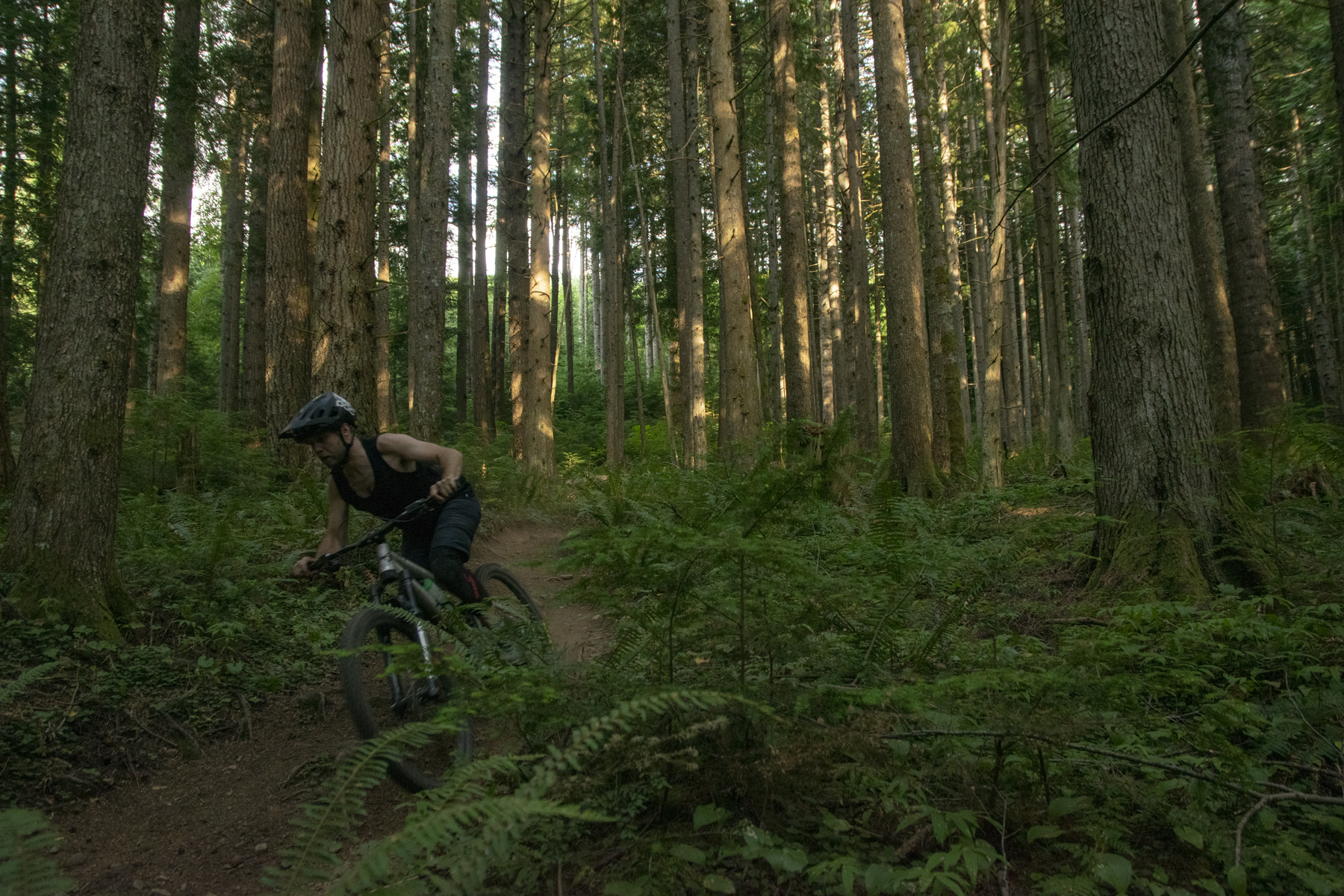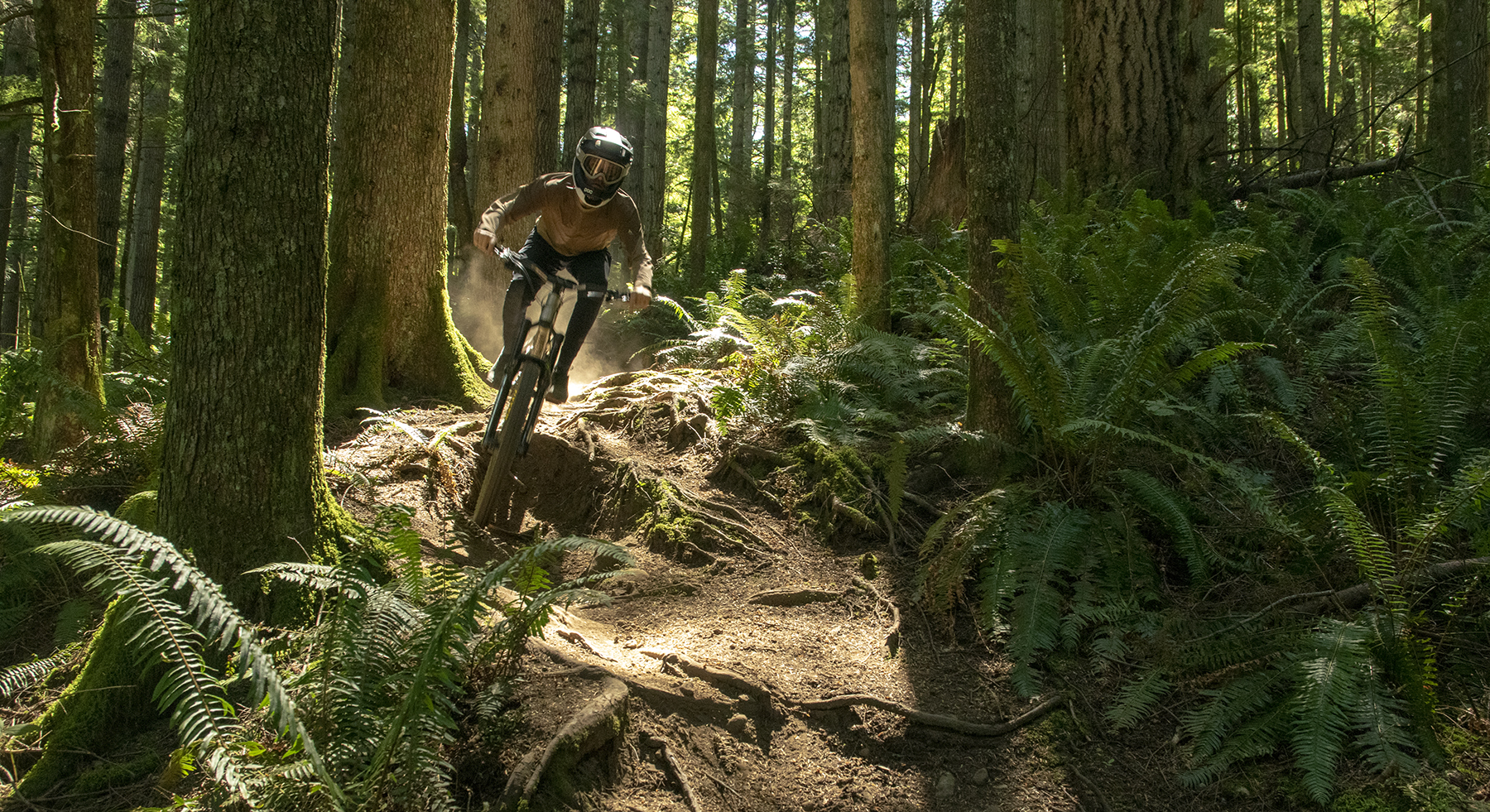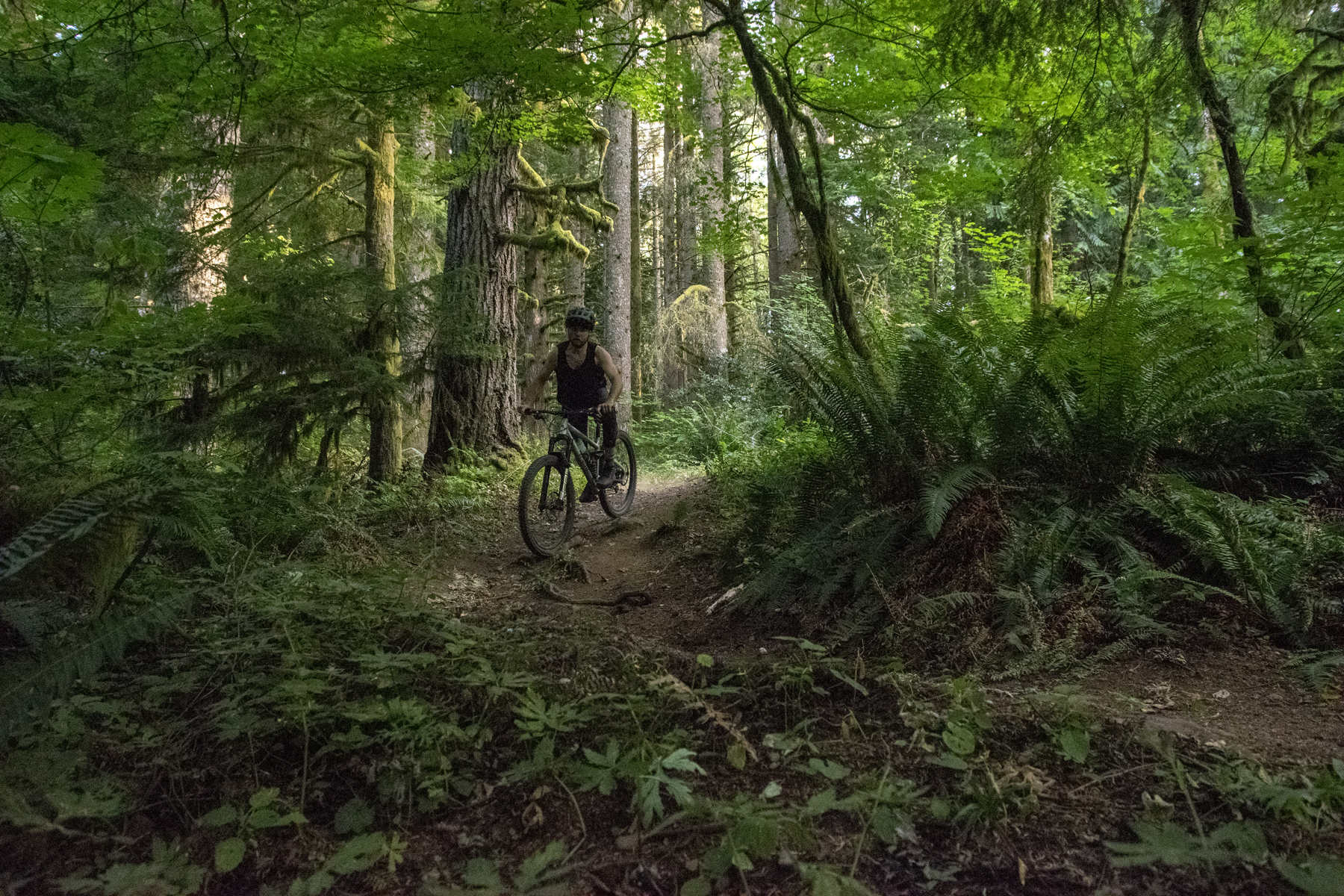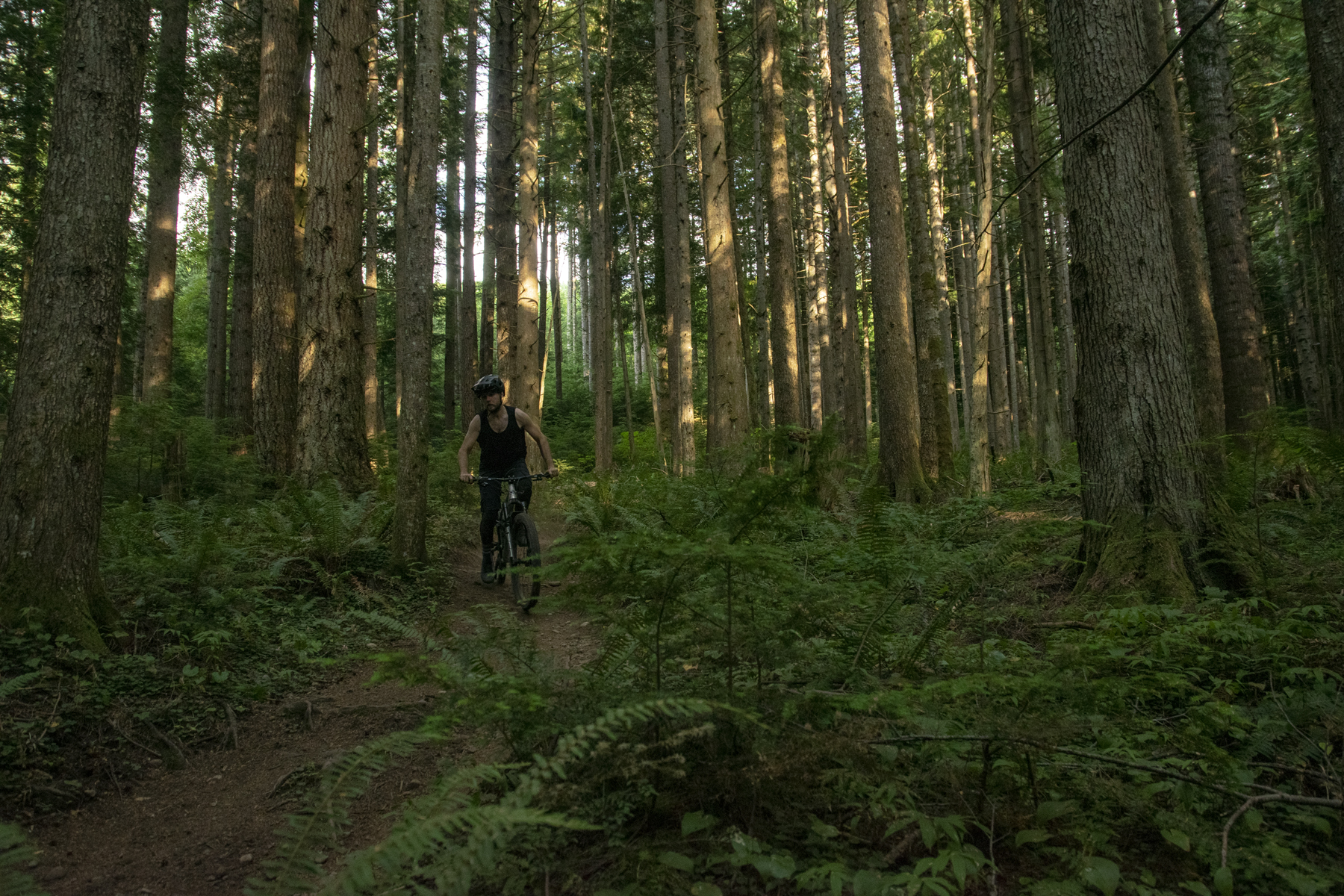2023 RockShox ZEB
Reviewer: 6’, 170 lbs / 183 cm, 77.1 kg
Test Location: Washington
Test Duration: ~3 months
Bolted to: Nicolai G1 & Kavenz VHP16
Blister’s Measured Weight: 2,329 grams (ZEB Ultimate, 29”, 170 mm travel)
MSRP: $1,159 USD
Stated weight: 2,341 g
Travel options: 160, 170, 180, and 190 mm
Wheel sizes: 27.5’’ and 29’’
Offsets: 38 mm (27.5’’), 44 mm (27.5’’ and 29’’)
ZEB Ultimate
- MSRP: $1,159 / €1,253 / £1,119 (European prices include VAT)
- Damper: Charger 3 RC2 w/ Buttercups
- Spring: DebonAir+ w/ Buttercups
- Other features: Ultimate Bushing Package, Pressure-Relief Valves
ZEB Select+
- MSRP: OE only
- Damper: Charger 3 RC2
- Spring: DebonAir+
- Other features: Pressure-Relief Valves
ZEB Select
- MSRP: $869 / €968 / £864 (European prices include VAT)
- Damper: Charger RC
- Spring: DebonAir+
ZEB
- MSRP: OE Only
- Damper: Rush RC
- Spring: DebonAir+

Intro
RockShox gave the heart of their suspension lineup a major overhaul this year and having now spent a lot of time testing the new ZEB Ultimate, I think it’s a big improvement over the first-generation version. We’ve already gone deep on the design details of all the new forks and shocks (check out our RockShox 2023 Lineup article for the in-depth breakdown) and will have a full review of the new SuperDeluxe — in both air and coil versions — soon, but we’re kicking things off with the revised ZEB.
Performance
I’ve been a big fan of the modern crop of extra-burly single-crown forks, particularly as Enduro bikes have gotten longer and slacker and 29’’ wheels have become common, all of which put more leverage on forks, especially fore-aft, which means stiffness (or lack thereof) becomes a bigger issue. And the ZEB still feels like the belt holder for the stiffest single-crown fork out there. The chassis hasn’t changed much from the first generation (again, check out our First Look for more on that) but it didn’t need much in my estimation — it’s still really good.
And while the ZEB didn’t get as major a chassis update as RockShox’s Pike or Lyrik forks, the couple of new features the ZEB does have are nice — especially the bolt-in adapters to make installing the front wheel easier if you’re not using a Torque Cap front hub. (Never mind that we’d probably be better off if 15 mm axles had never happened for these sorts of long-travel forks, and just stuck with 20 mm ones instead; that ship has long since sailed.) The pressure relief valves are a nice bonus too, though I haven’t yet gotten much air to come out of them in the handful of times that I’ve tried. Still, they’re there if you need them, and there certainly aren’t any drawbacks to including them (though Fox has recently sued RockShox over the valves, so we’ll see if they stick around or not).

The other 38mm-stanchioned big guns (namely the Fox 38 and Öhlins RXF38) aren’t far off in terms of steering precision or anything like that, but the ZEB does feel like a slight step up, both torsionally and (maybe more noticeably) in terms of fore-aft movement under really hard braking, especially on a steep trail with good traction. Not everyone will need that extra stiffness, to be sure, and it’s arguably too bad that RockShox doesn’t offer much overlap in travel range for the Lyrik and ZEB to accommodate folks who would prefer a lighter long-travel fork. But I think for most people looking at a 170+ mm travel option, the extra beefiness of the ZEB will be welcome.
The area where the ZEB has seen the biggest improvement is in the spring — I frankly wasn’t a huge fan of the original, so I’m very pleased to report that RockShox has made some major changes on that front. And they’ve worked. RockShox’s goals were to improve both small-bump sensitivity and increase midstroke support by reworking the spring (again, check out our First Look for the details on what’s been tweaked), and they have definitely succeeded in doing both.
In particular, the midstroke support is way, way better if you’re running a more middle-of-the-road setup; that also means that you don’t need to make nearly the same kind of compromises in terms of small-bump sensitivity to achieve a setup that offers more support if that’s what you’re after. And that was my biggest complaint with the original ZEB — it did a lot of things well, but it didn’t stay up in its travel as well as I would have liked, particularly on steeper, moderate-speed sections of trail where you’re needing to use a lot of brake control and are putting a lot of weight on the front wheel, but aren’t actually hitting anything particularly hard.
The old ZEB felt prone to diving and pitching the bike forward — not what you want when you’re already hanging off the back of the bike — unless I ran quite a bit more air pressure than recommended, which compromised both small-bump sensitivity and my ability to use full travel. I’m happy to leave a bit of travel on the table to achieve the performance I want in other regards — using every possible millimeter is really not that important, as a performance criteria — but I had a hard time achieving a balance of support and sensitivity that I was happy with.
The new ZEB has thoroughly addressed that complaint. As per usual, there’s some wiggle room depending on how you choose to set up the fork, but with my preferred settings, both support and sensitivity were improved from where I wound up on the first-generation fork; you can find bigger gains if you’re willing to really emphasize one at the expense of the other. I wound up running a few PSI more than RockShox’s Trailhead app recommended for my weight, but it got me quite close.
The new Charger 3 damper also works really well. So did the prior-generation Charger 2.1, but in particular, the new version feels more capable of being run with notably firm compression damping without feeling spiky or harsh. If that’s not what you’re after, you certainly don’t have to — the adjustment range is broad, and each click makes a noticeable difference — but the work RockShox has done to iron out sharper, high-speed harshness has paid off. And especially for folks who find Fox’s newer VVC Grip2 dampers to be more lightly damped than they’d prefer, there’s a lot to like in the new ZEB. At the firmer end of its range, especially in terms of high-speed compression, the Charger 3 is able to generate a lot more damping and provide far more support than the Grip2. I mostly ran the ZEB’s high-speed compression adjuster at either 0 or +1 depending on the trail (more of the former than the latter) and was quite happy with the results.
To be honest, my initial reaction to hearing that RockShox had indexed the default setting on the damper to the middle of the range was an apathetic one; I didn’t see anything wrong with the idea, certainly, but it didn’t strike me as all that big a deal, either. But having now spent a while with the layout, I have to admit that it’s actually pretty nice. For one thing, it’ll let a lot of people find a decent baseline starting position more easily by just running the compression adjustments in the middle of the range. And maybe more significantly, it’s really easy to tell where in the range either of the compression adjustments is, simply by looking at the fork — no counting of clicks required. And speaking of the clicks, the detents on all the damper adjustments are very well defined and easy to differentiate. Game-changing? Maybe not, but it’s a nice convenience.

The Charger 3 damper is also essentially silent — RockShox’s claims there are legit. Personally, I don’t really find that to be all that big a deal one way or the other — other forks may make a little noise, but it’s never bothered me much — but it is cool, and I don’t think anybody is going to complain about the absence of rebound slurp. And if those little bits of noise have always bugged you, well, here you go.
One other, more important, aspect of the new ZEB that’s particularly impressive is how well it smooths out certain chatter; I notice this a lot less on an individual bump-by-bump basis, and more over the course of a day, in terms of hand and wrist fatigue. Having done some back-to-back testing of the new ZEB against its predecessor and key competitors, the new fork genuinely makes a difference on that front. Whether it’s down to the new spring, the damper, the Buttercups, or (most likely) a combination of the three is hard to isolate, but the end result is real.
And all that adds up to what I think is a really well-rounded, easy-to-set-up, high-performing fork. The ZEB has been consistent and predictable in its performance, and has done an impressive job of just fading into the background and letting me get on with my riding, in a good way. And unlike the prior-generation version, there aren’t any major shortcomings in its performance in specific areas. It’s a very easy fork to recommend to a whole lot of people looking for a long-travel single crown who don’t have very specific needs that would steer them toward something else — the ZEB is just well-rounded, easy to tune, and works very, very well.
Comparisons
(For comparisons between even more forks, including the smaller-stanchioned Fox 36, RockShox Lyrik, Öhlins RXF36, Manitou Mezzer Pro, and EXT Era, be sure to check out our Trail / Enduro Fork Comparison article.)
We’ve covered the comparison to the prior-generation ZEB in quite a bit of detail already, but to recap, the biggest difference between the two is in terms of midstroke support, which I’d primarily attribute to the updated spring. (And that spring is retrofittable to the first-generation ZEB if you’d like to make an upgrade.) The new fork is also a bit smoother in how it deals with chatter (mostly in that it’s less fatiguing over long days of descending, especially if you’re running it relatively firm and seeking a setup that puts some emphasis on support).
In short, I think there are going to be very few people who find the new fork to be a step backward from the old one, and certain riders — especially folks who care about support a fair bit — are going to find the new ZEB A2 to be a major upgrade. The improved midstroke support on the new fork does maybe mean that it feels a little less plush on medium-sized hits, but I think that most people who really want that feel should be able to get similar results out of the new one by running a little lower air pressure and possibly increasing volume tokens to compensate.

The upgrades that RockShox has made to the air spring in the new ZEB A2 bring it roughly in line with the Fox 38 in terms of midstroke support — which is to say, pretty good but a little short of the class leaders (see below). The ZEB has a slight edge in terms of both small-bump sensitivity and chassis stiffness, but neither is huge. The biggest point of differentiation between the two might be the overall compression damping range — the 38 is more lightly damped overall, and while the ZEB can be opened up to fairly light compression damping with the stock tune, it’s able to go quite a bit firmer than the 38 — and does an impressive job of not being particularly harsh and spiky when you do so. (For reference, I’m comparing the new ZEB Ultimate with the Charger 3 damper to the Fox 38 Factory with the Grip2 damper.)
This part is a bit trickier to explain, but the 38 also feels a little more lively, and as if it provides a bit more feedback as to what the front wheel is doing through the bars than the ZEB does, whereas the ZEB is more muted and just irons the trail out more completely. That’s not to say that the 38 feels harsh, and I don’t really think there are right or wrong answers here in terms of which is truly better; they’re just different. The ZEB has an edge in terms of smoothness and minimizing hand fatigue, but there are times when the 38 feels easier to tell exactly how the front tire is gripping, particularly when it’s skipping over smaller, more chattery impacts and the front tire breaks and regains traction.

The RXF38 is the most supportive of the three 38mm-stanchioned big guns, and also the one with the firmest overall compression damping tune — bigger, heavier, and/or more aggressive riders who tend to favor especially firm, supportive, heavily-damped setups are likely to find a lot to like here.
The ZEB definitely edges out the RXF38 in terms of small-bump sensitivity and plushness, and while both forks do a notably good job of allowing quite firm high-speed compression damping setups without feeling particularly harsh, the ZEB is even more impressive on that front, too (though the RXF38 can also run firmer damping without a re-valve).
The more you’re specifically after a very supportive setup and are willing to trade off some small-bump sensitivity to get there, the more sense the RXF38 makes; the ZEB is easier to make quite plush and smooth, while still having significantly better support than its predecessor.

Who’s It For?
The new crop of extra-burly single-crown forks, the ZEB included, is going to be best suited to folks on long-travel Enduro bikes, riding steep, fast trails, and hitting things hard. They do come with a weight penalty compared to their smaller-stanchioned counterparts, but the differences in stiffness and precision are real and worthwhile, and the ZEB et al come in longer-travel variants to better suit those sorts of bikes. [That said, we haven’t yet ridden the new 2023 RockShox Lyrik to see how it compares — hopefully we’ll be able to change that soon.]
As for the ZEB, specifically, the new one is a really good, very well-rounded fork that’s highly tunable and easy to adapt to a lot of different setups, and doesn’t have the notable shortcomings of its predecessor, particularly in terms of midstroke support. And especially for folks who have found the Fox 38 to be too lightly damped, the ZEB has a lot to offer. The Öhlins RXF38 is still the most supportive, firmest-damped fork in this class that we’ve tried to date, and is a great option for folks who are drawn in that direction, but the ZEB has better small-bump sensitivity.
Bottom Line
RockShox has done a great job of updating the ZEB. The new spring and damper are both notable improvements over the previous versions, the chassis is still great, and it all adds up to a very good, especially well-rounded fork (for its class) that it’s easy to imagine working for a ton of riders. The shortcomings of the prior-generation ZEB — particularly its lack of midstroke support — have been addressed very well, and RockShox has done that without compromising the fork in other areas. The ZEB has gone from “good, but with drawbacks” to truly great. And stay tuned for our review of the matching SuperDeluxe shocks (both the air and coil versions), coming soon.


Great Write Up! How does the new Zeb compare to the prior model with the Secus upgrade? I’m looking at upgrading my original Zeb 190 and value a plush off the top feel with good midstroke support.
Did you ever get an answer to this? I’m curious as well.
A Luftkappe comparison would be great as well, since the Luftkappe and the 2023 air spring are in a similar price ballpark as upgrades for existing Zeb owners.
+1 on this.
+1
any comment on how the new updates are on the lyrik and/or pike?
Hi David.
Thanks for another very informative article. I just put a Zeb on my bike as a result of trusting your opinion here.
6 rides in and I think it’s fantastic – in that it “disappears” when riding. Lovely and quiet too. No slurping.
I have a question about your adjustment settings please.
Hope that’s ok.
You wrote:
“ I mostly ran the ZEB’s high-speed compression adjuster at either 0 or +1 depending on the trail (more of the former than the latter) and was quite happy with the results.
– – –
Then
– – –
RockShox – indexed the default setting on the damper to the middle of the range-
it’ll let a lot of people find a decent baseline starting position more easily by just running the compression adjustments in the middle of the range. “
So, to be clear, you’re running HSC compression 0 or 1 click from ‘wide open’ – or – you’re running it at what RS considers to be ‘zero’ – the middle of the range?
Also might you please be able to comment on rebound – mine seems to work best about 3-4 clicks from wide open?
And LSC? Middle of the range perhaps?
Always great to know how an experienced rider with the ability to communicate well has decided to use their suspension.
The Zeb is certainly revealing the limitations of the basic Float X on the back of my Kenevo SL which can bounce feet on pedals on a 3-4” root impact (which the Zeb magic carpets over). Rear coil here I come, EXT for me.
Hey Neil,
By “0 or +1” I mean in terms of how RS defines the settings — so middle of the range, or one click firmer. I vary LSC a little more depending on conditions and the rest, but I’ve been near the middle, give or take, on that as well.
Hi, I updated from the ZEB ultimate A1 to the 2023 A2, I love it: it feels really “buttery” on small-fast chatter.
One behavior I still don’t understand: the pressure relief valves…they work…they let air out.
How’s that any different (on the air spring side) than me setting the right baseline pressure with a shock pump before a ride ?
Hey Franz,
The valves aren’t connected to the air spring at all. The spring is fully contained within the stanchion, and the valves are there to release built up pressure in the lowers, outside of the spring. Hope that helps clear things up.
The air those relief valves release is air in the lowers. Not in the air spring. I’ve not noticed and air when I try them but I’m not riding full on DH which I guess may be the treatment that causes air pressure build up.
The lowers and even the static pressure therin contribute a significant amount to end of stroke ramp up
More here:
(This device from Everflow releases some end of stroke travel because the damper leg has much more air space in the lowers than the air leg. So linking the lowers reduces effective ramp up. If you’re not using tokens this device is worth a look at €25.)
https://www.everflow.it/webshop/tuning-parts/airlink
Fits Fox and RockShox forks with pressure relief buttons. AirLink connects the volumes of the lower legs in order to reduce the pressure buildup that develops in the left lower leg during compression, making the compression curve more linear. It will therefore be possible to increase the operating pressure in the positive chamber, increasing the mid stroke support without obtaining excessive progression in the end stroke.
Or also useful for those who struggle to use full travel despite already being without tokens. Available with or without pressure relief button*. For installation, simply unscrew the original plugs and screw the AirLink fittings, then the hose will be cut to the correct size. On Fox 38 the improvement in performance will be less than on the other forks.
*it is possible to use the button to slightly improve the initial sensitivity of the fork, venting the lowers with the fork at sag height, even while you’re pedalling. In this way a negative pressure will be created in the lowers with the fork fully extended, which will act as a “negative preload”.
David. If you’re reading this thanks for your earlier reply. Somehow I’d forgotten to say thanks. Appreciate it.
Hi and thanks for the great write-up,
I just got my new bike that I ordered last March and was happy to see that the fork had been updated from ZEB R (model from previous lineup) to ZEB (just ZEB, or sometimes ZEB base)
ZEB base comes with the new Rush RC damper as you mention in your article but I have been unsuccessful in finding any more information about this damper. Most articles focus on the top line Charger 3 model. Is the Rush better than old Charger R model? How does it work? Is it maybe an upgraded version of motion control damper? Is it any good?
I’m so new to the sport that my subjective analysis is as good as nothing: the springy things in front and back feel much better than not having them.
I would be happy to hear any experiences people have had of the new Rush RC :)
It is nice to see a write up that is not a press release like all the ones that came out in May. Great job.
Great articles anyway!
Currently I am riding a RockShox Lyrik RC2 Charger 2.0 with Smashpot am I am thinking to Upgrade to ZEB with Charger 2.0.
As you tested the Smashpot as well as the new ZEB, Could you please give any comparison?
Thank you,
Christian
I’d also love to know how Vorsprung’s Smashpot and maybe Secus would behave with the 23 Zeb.
And the TruTune too.
Will you put a secus on the new zeb? Remember reading your (or the other reviewer) recommended secus more for the prior zeb.
Yeah. How about that David?
I’d also really like to know how a Smashpot or Secus from Vorsprung would behave with the up to date Zeb 23
And the TruTune too. My feedback on TruTune is that it does indeed seem to increase travel a touch.